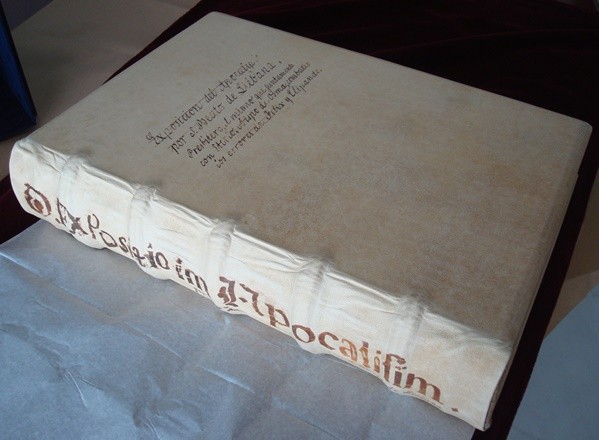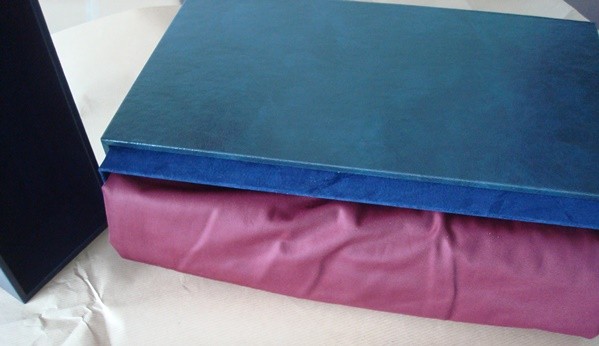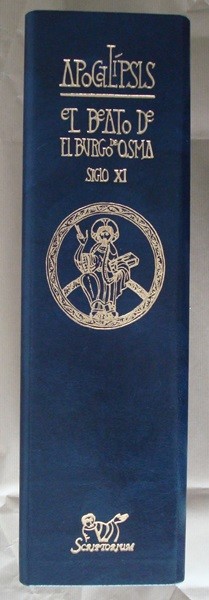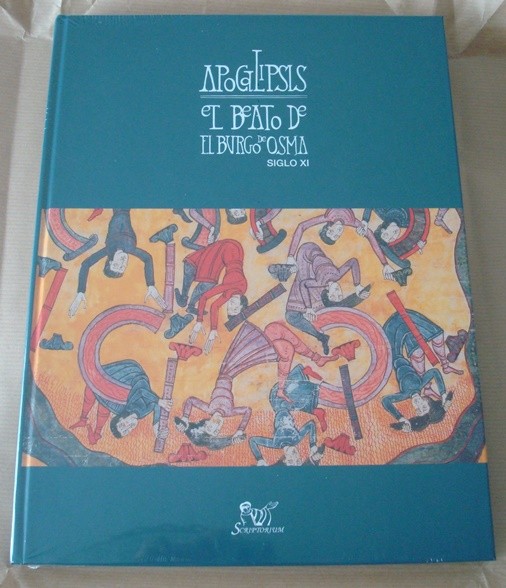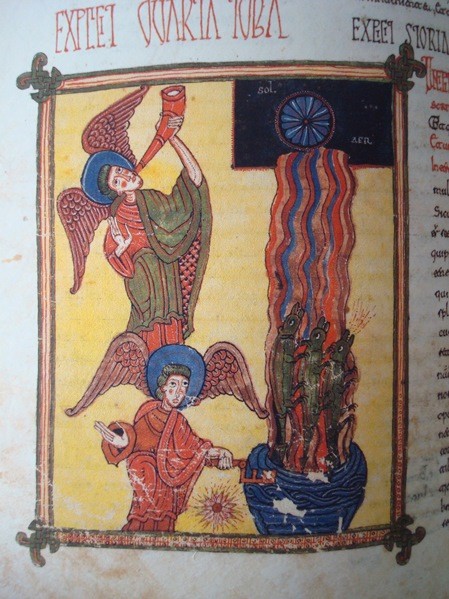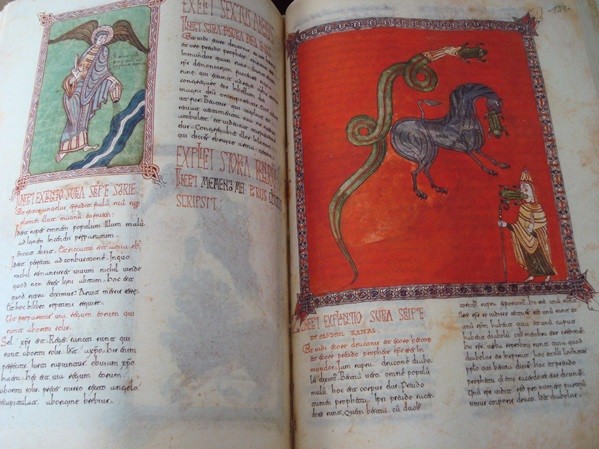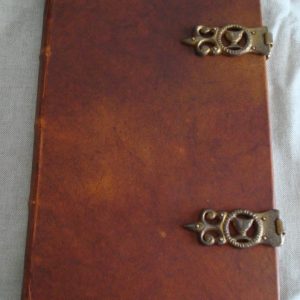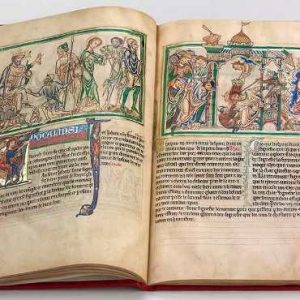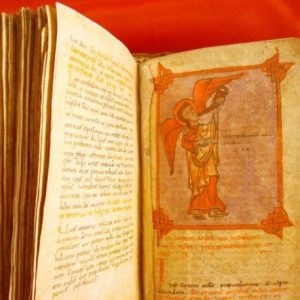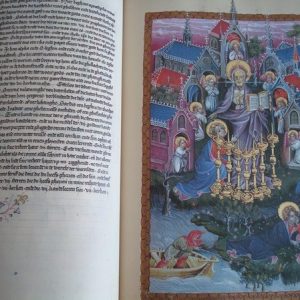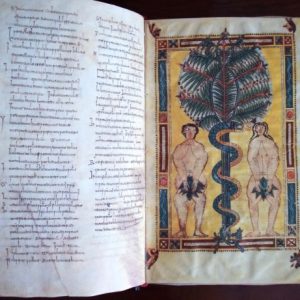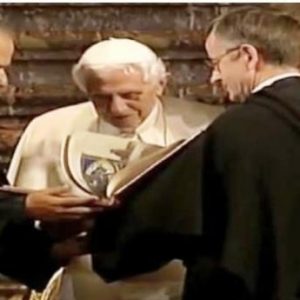Description
Original copy on natural parchment of The Beatus of Liébana codex of El Burgo de Osma, Apocalypse of San Juan, 11th century. Burgo de Osma. Spain. First Blessed Spanish Romanesque and masterpiece of Romanesque art. First facsimile edition on natural parchment (not parchment paper, not pergamenata paper, but authentic natural parchment of lamb) made in 2015. An extraordinary edition, a 5 stars plus in every great Library!
Exclusive and exclusive edition of 390 copies, numbered and notarially certified, verifying also notarially, that in the manufacturing process only natural parchment has been used exclusively.
The Codex of the Commentary on the Apocalypse of Beato de Liébana, today preserved in the Diocesan Historical Archive of the Cathedral of El Burgo de Osma, considered one of the most important Blesseds of those currently known for several reasons: it is the first known Spanish Romanesque Blessed, today a masterpiece of international Romanesque; of the most creative with respect to traditional iconography; The Blessed of El Burgo de Osma is one of the best preserved of Beato’s first two original creations.
Certain news in the codex informs us about its data and also about its authors: begun in 1086 (probably January 3), it was written by the priest Pedro and illuminated by the painter Martino. The paleographic and codicological characters indicate that the codex was originated in the monastery of San Facundo and San Primitivo de Sahagún, center of the Cluniac reform, very important and one of the favorite places of the kings Fernando I and Alfonso VI.
An ambitious work of great format, of a great quality and artistic creativity and of a fully Romanesque style of French origin. A typical example of his extraordinary iconographic innovations as well as his reforming spirit is the illustration of the “Victory of the Lamb over the beast and the kings of the earth” (Rev. 17, 14-18). Apart from the traditional motifs of the dominion of the Lamb over the beast and the dragon, this illustration of the Osma Codex shows for the first and only time the prostitute of Babylon in seductive nudity, despite being devoured by fire and pulling her hair in his agony.
Other supplementary illustrations of the Osma Codex derive from this posthumous branch, such as the full-page images of the Alpha and Omega and the Cross. If in this way the Blessed of Osma stands out from the other codices of his branch for his iconographic innovations and his supplementary illustrations, nevertheless in other cases he reflects in the best the original version of Blessed.
A well-known example in this regard is the “World Map” as an illustration of a passage from Blessed’s commentary on the mission of the apostles that assigns to each apostle a region. The intention of the “World Map” of Blessed is to visualize the dispersion of the apostles throughout Europe, and to this intention corresponds the best of the map of Osma for the presence of busts of the apostles in their respective regions. Another example in which the Osma Codex faithfully reflects the original tradition of Blessed is the illustration of “The Four Angels Braking the Winds” (Rev. 7, 1-3), an image that – like the “World Map” – retains the circular shape of the world and also the type of winds, derived from antiquity, like heads with trumpets in the mouth. In short, the Osma Codex is one of the most original and at the same time most authentic of all Blesseds, and also stands out for its great artistic quality. Thus he is part of “the most outstanding Blesseds” as indicated by Wilhelm Neuss, the author of the first fundamental book on Blesseds.
Spectacular facsimile bound in real leather parchment on wood and medieval style, format 28 x 37.5 cm, 332 pages in natural parchment with splendid miniatures where the gold, both plain and in relief, are reflected as they are in the original codex . The only way that with this original copy may be as close as possible to the original codex.
This original copy is presented next to a small sheet of red velvet in a beautiful case petaca closed for better preservation, format 30.5 x 40.5 x 12 cm, and is complemented by an excellent book study led by Professor Peter K Klein, bound in illustrated hardcover, format 25 x 33 cm. Texts in Spanish and English.
The edition in natural parchment (not parchment paper, or pergamenata paper, but 100% natural parchment of lamb in the traditional way, without chemical treatments), is extremely complex and unique, and makes each of its copies an original copy of the manuscript of the eleventh century. The use as a support for the parchment, natural organic element, as well as manual processes in each copy, including the flat and raised golds, according to the illuminations and as they are in the original codex, make each of the copies unique for themselves. Exclusive facsimiles handcrafted on natural parchment, recovering the beauty and authenticity of the ancient illuminated manuscripts. An excellence for the best libraries, collectors and bibliophiles, a joy for the senses that will last for centuries.
Sold out edition, fourth work that the Scriptorium publishing house made on natural parchment and with which it continued its exclusive editorial work in discarding paper as a support for its works using lambskin.
Complete copy and in perfect condition, new, unused (it is not a second-hand copy).
Free shipping for this item. Consult us any questions, indicating the article reference.




